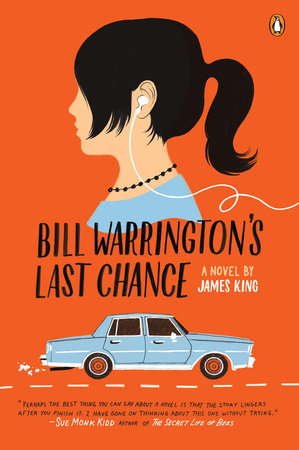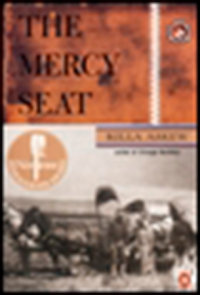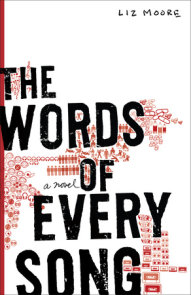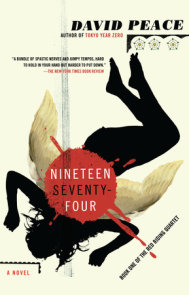READERS GUIDE
Questions and Topics for Discussion
INTRODUCTION
Deeply moving and often bitingly funny, Bill Warrington’s Last Chance is both a coming-of-age and a coming-of-old-age story. It explores, with equal empathy, two of life’s most challenging transitions — from childhood to adulthood and from adulthood to old age, illness, and death.
As the novel begins, seventy-nine-year-old Bill Warrington’s grasp on reality is slipping. He can no longer remember where he’s put things or who he’s speaking to when he calls one of his children to suggest a family reunion. The boundary between past and present has all but disappeared. His beloved wife Clare died long ago, and his three children — Mike, Nick, and Marcy — are essentially estranged both from him and from each other.
But when Marcy visits Bill at his request and brings along her teenage daughter, April, a connection between grandfather and granddaughter begins to take shape. And when Bill offers to teach her granddaughter how to drive, against Marcy’s vehement opposition, a seed is planted that will come to fruition in a wild road trip.
The novel is a multilayered exploration of what breaks families apart and what holds them together. Each of Bill Warrington’s children is still recovering from having him as a father — from his drinking, unsteady employment, and violent temper. Looking at the current mess of their respective love lives, Marcy asks Nick, “What’s wrong with us?” He answers simply: “We’re Warringtons” (p. 211). Their brother Mike’s life has also fallen apart, even though he’s done his best to escape the family’s downward gravitational pull by not speaking to any of them. True to form, April’s relationship with her mother is quickly unraveling and soon reaches the breaking point when she and her grandfather hit the road, headed for the farthest point west on the map — San Francisco.
A compelling story of one family’s dysfunction, Bill Warrington’s Last Chance is also a remarkable, often heartbreaking, representation of aging and the disorienting slide into Alzheimer’s. In the character of Bill Warrington, the novel shows readers not only what dementia looks like from the outside but what it feels like to the one who suffers from it. James King takes us inside the mind of a man who is slowly slipping beyond the reach of his family and of reality and lets us see the world through his eyes. It is a feat of extraordinary imaginative empathy.
ABOUT JAMES KING
James King lives in Wilton, Connecticut, with his wife and two children. This is his first novel.
A CONVERSATION WITH JAMES KING
Q. This is your first novel. Could you talk about its genesis and how long you worked on it? Did you start and abandon other novels, or is Bill Warrington’s Last Chance your first attempt?
While this is my first published novel, I actually wrote three others before this one. Those three each died a prolonged death-by-rejection at the hands of numerous agents and publishers — deservedly so, by the way. I began writing Bill Warrington’s Last Chance when I returned to school after thirty years for my Master’s degree and finished it in about two years. Its genesis is the friendship I developed with an older neighbor of mine who died a few years before I began writing the novel. He was a gruff, stubborn New England Yankee type who had lost his wife just two weeks before my wife and I moved into our home. He didn’t suffer from any form of dementia as Bill Warrington does, but the house that he had built with his own hands as a gift to his wife began quite literally falling apart as he grew older.
Q. How were you able inhabit and represent a deteriorating mind so convincingly in the character of Bill Warrington?
The truth? I haven’t a clue. I remember when I first started writing the scene in which Bill experiences his first major cognitive meltdown: He’s in a gas station restroom somewhere in the Midwest, everything is going according to plan, and suddenly he realizes he has no idea where he is or who he’s with. My inner editor kept yammering away at me, telling me to stop, that I didn’t know what I was doing, that I was in way over my head. I think I wrote my way out of it just to silence those voices. It was a painfully wonderful writing experience.
Q. You capture a remarkable range of voices in the novel, from a sullen, alienated, smart-mouthed teenager to a cantankerous old man suffering from Alzheimer’s. What are the most challenging and imaginatively fulfilling aspects of getting such disparate voices right? Do you consciously work at listening to the ways people talk for the purposes of your own fiction?
Are you asking if I eavesdrop? Absolutely. I’d like to say that I do it to inform the creative process, but the truth is I’m just nosy. I do enjoy writing dialogue much more than exposition, probably because I’m much more interested in what people have to say for themselves than I am in describing, say, the unusual shape formed by the reflection of the water spilled on the hard oak floor of the creaky cabin set back in the sylvan meadow on a humid, overcast day in August. And as I’ve just proven, I think I’m better at writing dialogue than description. One of the challenges with dialogue, though, is keeping the various voices from sounding too much like each other. They can’t all be sarcastic like April, for example, or as cynical as Mike. I find that as I get to know the characters better, it becomes easier to keep the voices separate in my head and eventually on paper.
Q. Why did you decide to tell the story from multiple points of view? Is any one character’s perspective more trustworthy than the others?
I had no choice. The Warringtons are a pretty assertive bunch. None of them was willing to take a backseat to anyone and they each demanded a voice of their own. I’d be hard put to say any one of them is more trustworthy than the others. One of the reasons I decided to tell the story from multiple points of view was to keep each voice trustworthy, to highlight how “right” we think and feel we are in situations and how those perspectives can vary with others so dramatically around the same issue or incident. It’s a variation, I suppose, of the story of the elephant and the six blind men. Each described what they felt accurately, but it turned out to be one small part of a much larger story.
Q. Whenever April gets in trouble, Marcy immediately complains about how hard it is for her. Did you want readers to see Marcy as a kind of narcissist, always assuming the role of the self-proclaimed, long-suffering victim?
I see Marcy’s reactions as typical of the way we all tend to respond to stressful situations involving people we love. We don’t say, “I worry about you so much because I love you,” or “I’m upset because knowing that what you’re doing might hurt you is unbearable to me.” Instead, we tend to say things like, “Do you know how long I waited up for you? Do you know what a headache you’ve given me, the absolute hell you’ve put me through?” It’s more a matter of poor communication than narcissism. Unfortunately, though, these little communication misfires usually make the situation much, much worse.
Q. In many ways, the Warringtons feel like a typically fractured American family. Do you see them that way?
All families — large and small, American or otherwise — are fractured in some way, aren’t they? Some more than others, certainly, but it seems to me that even the must functional of families are hotbeds of intrigue, competition, misunderstandings, jealousy, anger . . . you name it.
Q. What’s your sense of how the American family has been portrayed in recent American fiction?
Is there such a thing as lovingly dysfunctional? That’s the feeling about family that I get from reading the recent works of terrific writers like Richard Russo, Elizabeth Strout, Junot Diaz, and Ann Tyler, to name a few. Self-absorbed is another description that comes to mind. Today’s characters — including the ones I’ve created — seem so caught up in what they feel they are entitled to that they’ve lost a certain perspective that makes it possible to hang in there when the going gets tough with relationships.
Q. Why is the road trip, or journey, such an essential feature of coming-of-age stories?
Interesting question. Maybe it has something to do with the fact that when you start out on a road trip, you know, or think you know, what the final destination will be. You’re just never sure what’s going to happen along the way, and there are always surprises. I remember as a kid looking at an adult — maybe someone in their late twenties — and thinking, “Someday I’m going to be as ancient as that person.” I knew where I was headed; I just couldn’t imagine how I was going to get there.
Q. When you started the novel, did you know how it would end, or did the ending arise as the story unfolded?
I had no idea where Bill and his family were going to end up when I started. This was both exciting and nerve-racking. How would I know when I reached the end? It reminded me of the years immediately after I graduated from college and decided to do some traveling. I had no set timetable. There were lots of moments on that trip when I wondered if I would know when it was time to stop, go home, and attempt to make something of myself. That moment came when I realized I was just wandering, not really traveling. I felt the same way when I finally wrote the ending. Somehow, the journey just felt complete.
Q. What are you working on now?
Another family-centered story involving a man’s discovery of a secret so painful that he leaves his wife and daughter. Unlike Bill Warrington’s Last Chance, though, the entire story is told from just one point of view. I don’t know yet how this one will end, either.
DISCUSSION QUESTIONS




















